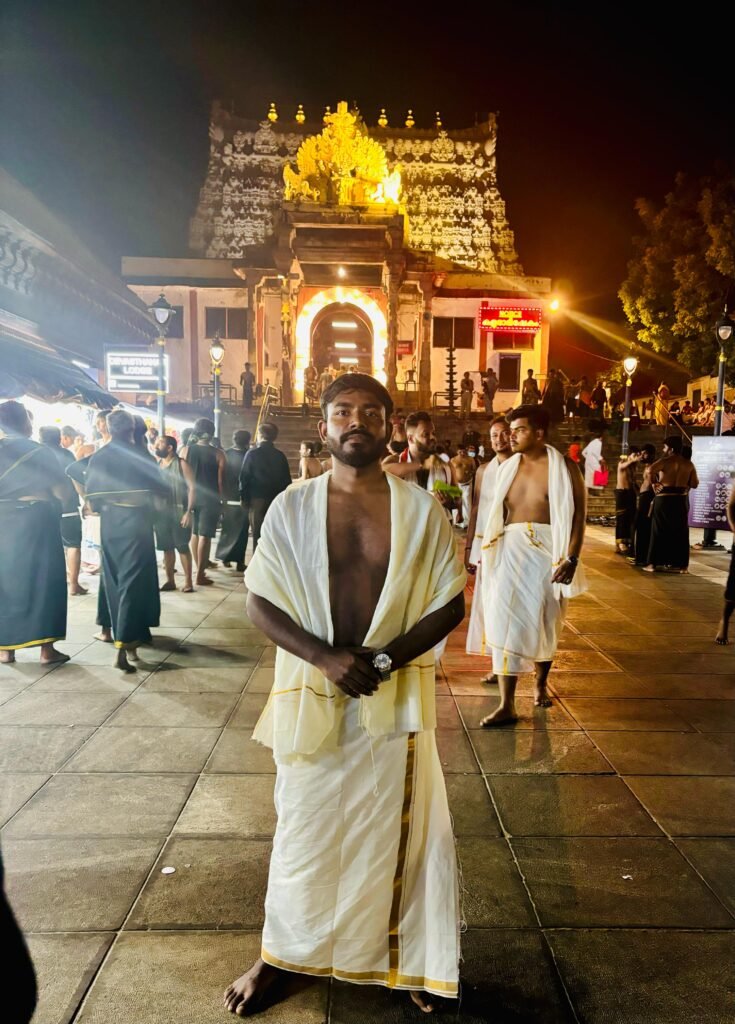Padmanabhaswamy Temple: My Spiritual Visit & Timeless History
If there is one place in Kerala where history, spirituality, and mystery come together beautifully, it is the Padmanabhaswamy Temple in Thiruvananthapuram. My visit to this magnificent temple in January was more than just a trip—it was a spiritual experience, filled with serenity and awe. From its architectural beauty to its deep-rooted cultural significance, Padmanabhaswamy Temple left a lasting impression on me.
A Spiritual Start to the New Year
January is a wonderful time to visit Kerala—the weather is cool and pleasant, and the skies are usually clear. When I arrived at Padmanabhaswamy Temple, the early morning sunlight cast a golden glow on the towering gopuram (temple tower), making the whole place feel divine.
The moment I entered the temple premises, I was struck by the sense of calm and the rhythmic chanting in the air. Devotees were standing in long but peaceful lines, waiting for darshan of Lord Vishnu in his Anantha Shayana (eternal yogic sleep) posture on the serpent Adishesha. The energy was palpable—reverent and timeless.

Historic Grandeur of Padmanabhaswamy Temple
One of the most captivating aspects of this temple is its rich history. Padmanabhaswamy Temple is believed to be over 1,000 years old, with references found in ancient Tamil texts from the early medieval period. It gained prominence during the reign of the Travancore royal family, who have considered themselves servants of Lord Padmanabha since the 18th century.
The temple’s structure is a stunning blend of Dravidian and Kerala-style architecture, featuring carved stone pillars, intricate murals, and a massive gopuram that rises over 100 feet high. The temple is not just a place of worship—it’s a living testament to centuries of devotion, culture, and artistry.
The World’s Richest Temple
Padmanabhaswamy Temple came into the global spotlight in 2011 when hidden underground vaults were discovered beneath its premises. These vaults contained a treasure estimated to be worth over $20 billion, making it one of the richest temples in the world.
This discovery only added to the temple’s aura of mystery and divinity. Vault B, which remains unopened, is shrouded in legend and religious caution, further elevating the temple’s spiritual significance.
My Personal Experience
As someone who enjoys both culture and spirituality, this visit was deeply fulfilling. The temple requires strict dress codes, so I wore a traditional mundu (white dhoti), which added to the authenticity of the experience. Phones and cameras are not allowed inside, which helped me truly immerse in the moment.
Inside the sanctum, the deity is visible through three separate doors—head, torso, and feet—each symbolizing different spiritual states. It was a humbling sight that words can hardly describe. I spent several quiet minutes in the inner courtyard, taking in the smell of sandalwood and incense, and listening to temple bells echo through the air.

Must-Know Tips for Visitors
If you’re planning a visit to Padmanabhaswamy Temple, here are a few tips that might help:
- Dress Code: Men must wear a mundu (no shirts), and women should wear sarees or long skirts. You can rent traditional attire outside the temple.
- Timings: The temple opens early in the morning and again in the evening. Try visiting during the morning poojas for a more peaceful darshan.
- Footwear: No shoes or slippers allowed inside the premises.
- No Photography: Mobile phones and cameras must be deposited at the counters outside.
Nearby Attractions You Shouldn’t Miss
Thiruvananthapuram, being Kerala’s capital city, has several other gems worth exploring:
- Kuthiramalika Palace Museum: Located near the temple, it’s a royal palace with exquisite woodwork and antique collections.
- Napier Museum: A perfect place for history buffs, showcasing Kerala’s rich cultural heritage.
- Kovalam Beach: Just a short drive away, it’s one of the most famous beaches in India.
- Shangumugham Beach: A peaceful beach ideal for sunset views.
Best Time to Visit Padmanabhaswamy Temple
The months from October to March are considered the best time to visit due to the pleasant weather. Visiting in January, as I did, is perfect—there are also several temple festivals that occur around this time.
One major celebration is the Alpashy festival, held twice a year, featuring grand processions, traditional music, and beautifully decorated elephants. If you’re lucky, your visit might coincide with one of these events.
Why This Temple is More Than Just a Monument
What truly makes Padmanabhaswamy Temple special isn’t just its wealth or size—it’s the devotion and spiritual legacy it carries. The Travancore royal family’s dedication to serving the deity, the intricate rituals performed daily, and the temple’s active role in the community make it a living place of worship.
Even for someone like me—just a traveler with curiosity and respect—this temple offered something profound. It made me pause, reflect, and appreciate the deep spiritual traditions of Kerala.
Final Thoughts
Padmanabhaswamy Temple is not just a religious site—it’s a cultural treasure, a spiritual haven, and a marvel of architecture. If you’re visiting Kerala, especially Thiruvananthapuram, this temple should be at the top of your list.
Whether you’re a believer or simply someone who appreciates history and beauty, a visit here is bound to leave you enriched and inspired. I left the temple feeling lighter, calmer, and somehow more connected—with a memory that will stay with me forever.



GIPHY App Key not set. Please check settings